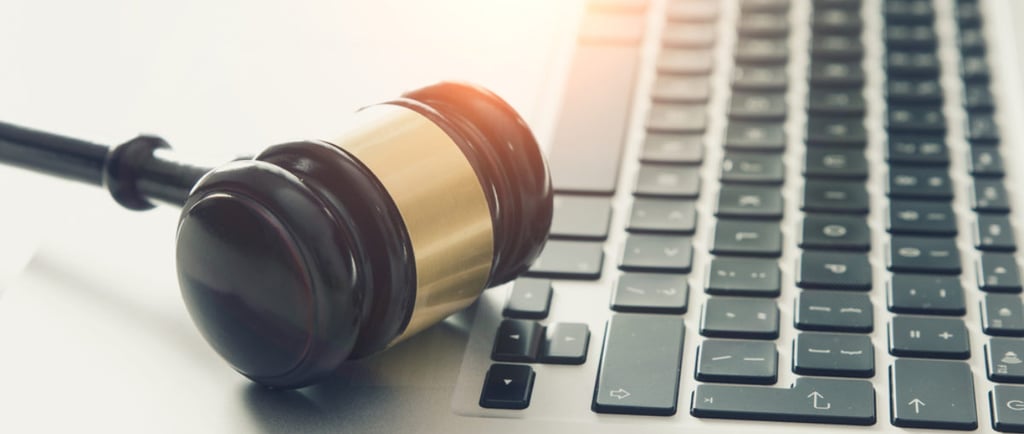A PHOTOGRAPH, WHOSE RIGHT IS IT? (THE PHOTOGRAPHER OR THE MODEL)
Blog post description.
Optimist Ibukun
3/2/20234 min read


A PHOTOGRAPH, WHOSE RIGHT IS IT? (THE PHOTOGRAPHER OR THE MODEL)
By Ahisu Ibukun Optimist
Actress and model Emil Ratajkowski was charged for uploading photos of herself on Instagram without the photographer's consent. According to a copyright infringement case from 2019, Edward Opinaldo v Emily O'Hara Ratajkowski.[1] Opinaldo stated that the model made money from uploading his images since they increased attention to her account, which in turn helped to promote her commercial endeavours and build brand recognition[2].
Rajakowski faced legal action for publishing a photograph of herself taken by a Paparazzo in October 2019, Photographer4w Robert O'Neil filed a lawsuit against the model, alleging that she had stolen his image of her walking down a New York City Street holding a banquet of flowers. It has been a normal occurrence wheremodels/celebrities were sued for posting pictures of themselves without the consent of the photographer. Jennifer Lopez, Rod Stewart, Emily Ratajkowski – to mention but a few as some celebrities sued over the same mistake. Kim Kardashian faced the same lawsuit in 2020.
The issue of who owns the copyright to the modelling image may come up, particularly when there isn't a written agreement in place or when most people are unaware of their rights in terms of photo ownership. Whose right is it, the photographer or the model?
Ownership is one of the fundamental issues in copyright laws. The creator or author of a work of literature, art, music, or another sort of creative work is given the exclusive and licensable right over what he has done under a section of intellectual property law known as copyright.
A photographer's creativity when taking an image is protected by copyright law. The ways in which photographers manipulate the lighting to illuminate the image, direct their subjects' poses, attire, and makeup, set up complete scenes with props, choose the best camera angles, and make other compositional and directional choices in order to express and convey various ideas, stories, feelings, and moments in the resulting photographs have all been recognized by courts as protectable elements in photographs.
The Exclusive Right of a Photographer
The general rule is that the person (Photographer) who shoots or takes the photo is the original copyright owner of the image. The photographer has the exclusive right to his photograph if he hasn’t waved the right. there are major 6 rights that a photographer has, which are:
i. right to reprinting,
ii. right to distribute,
iii. right to duplicate,
iv. right to promote,
v. right to publicly display,
Nigeria Law on Photography
The primary law that governs matters on copyrights in Nigeria is the Nigerian Copyright Act[3]. According to the Act, the photographer who took the photo is the rightful owner of the image. According to Section 28. (1[4]) Except as otherwise provided in an agreement, copyright conferred by this Act, shall initially vest in the author.
Section 108. (1)[5], "author" in the case of a photographic work, means the person who took the photograph.
Copyright law gives the right to photographers to acquire ownership of an image as soon as they push the camera's shutter button and produce it. Copyright establishes ownership while also granting the owner the freedom to copy, distribute, and transform the original work into derivative works (such as transforming a photograph into a brand-new original painting).
Since the photographer is the rightful owner of the copyright, copyright law permits the use of the model's image for any editorial purpose without seeking permission.
The Restriction on Commercialization
The photographer would need to have the model's written permission before selling a model's image. Without the model's permission, a photographer cannot utilize their model's image for commercial purposes. A photographer must have a license in order to commercialize a picture that was taken by him.
A model release form, also known as a model release agreement, is a document that gives a photographer the exclusive legal right to use a model's image as he may desires. This means that the model waives any claims that they could have, such as a right to privacy. My best recommendation to any photographer who intends to use a model image for commercial purposes is to have a model release form prepared by a copyright lawyer.
Types of release form
1 Photo Release form
2. Model Release Forms
3. Minor Release Forms
4. Photo Print Release Forms
5. Property Release Forms
5. Photo copyright Release Forms
This release form will grant the photographer the exclusive right to commercialize the model image taken by him. The model does not have to be a traditional model. The model can be anyone whose images were used in the art.
Work For Hire in Copyrights
It is typically assumed that the photographer owns the copyright and has the right to do anything he/she wants with the photographs even if the model pays for a photo shoot. To sell such photographs for non-editorial (i.e., advertising/stock/marketing) uses, the photographer still needs to get a model release form/agreement in writing. Unless the photographer transfers ownership of the copyright in a written contract, the photographer will still possess the copyright even if a model pays the photographer for a session. Typically, this is a contract that grants the model unrestricted usage rights to the photographs as the person who hired the photographer. However, the photographer forfeits all rights to utilize such photographs himself by surrendering the copyright through a signed contract. As provided for in Section 28 of the Copyright Act[6], The copyright shall belong in the first instance to the author unless otherwise stipulated in a written contract, this was also pronounced in a recent judicial 2021 Court of Appeal case in Banire v NTA-STAR TV NETWORK LTD[7], that the person who took the photograph that he is the author and the owner.
Conclusion
The model is not allowed to copy the photograph, use it for commercial purposes (such as self-promotion), or do anything else with it without the photographer's written permission. Only if it is specifically stated in the agreement that both the photographer and the model have exclusive ownership rights to the photograph. They can both specify who gets paid and what happens to the photograph if the photographer and model can reach an agreement and decide to work together.
Almost always, the photographer who took the shot is the copyright owner. However, models still have the right to object to specific uses of their images, and for any commercial purposes unless they have signed a release form waiving that right.
[3] Copyright Act, 2022
[4] Section 28(1) Copyright Act, 2022
[5] Section 28(1) Copyright Act, 2022
[6] Section 28 Copyright Act, 2022
[7] Banire v NTA-STAR TV NETWORK LTD (2021)lcn/15036(CA),


